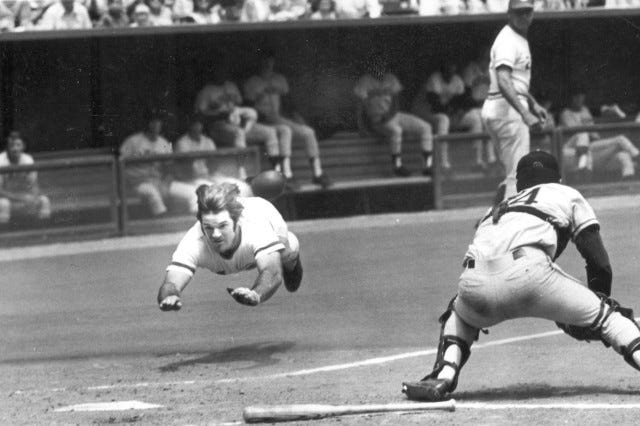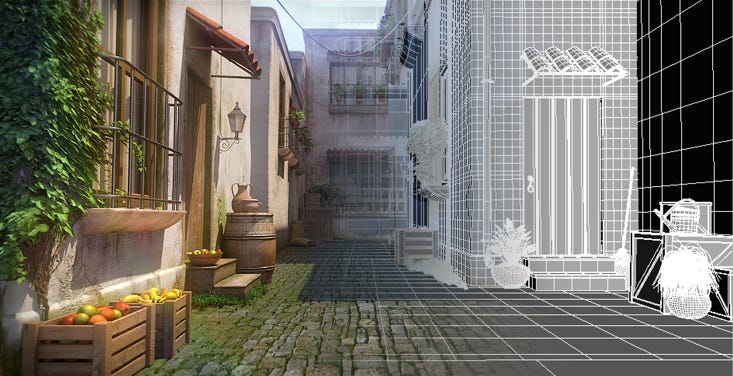When I was a kid, I loved watching baseball. I loved summer afternoons without school and watching the Cubs with Harry Carey announcing. Even today, I couldn’t tell you what I had for dinner last night but I remember that Andre Dawson had 137 RBIs in the 1987 season.
And in my time watching baseball, I saw lots of dudes do a lot of wrong things. They would get into fights. Or they get caught corking their bats. Or caught doing steroids. Off the field, players have been arrested for pretty much every crime in the book. But you know what…they would always keep showing up and playing baseball after a short suspension.
This was true for everyone except for one guy. Pete Rose. He had a lifetime ban. Do you know what he did? He did the one thing you cannot do. The one unforgivable cardinal sin of baseball…he bet on games while a part of a team. This was the one thing…the ONE THING…every baseball player/fan or anyone around the game knows you cannot do. And he did it. And he got caught. And he received a lifetime ban for it. No warning. No three strikes and you’re out. Just gone.
Growing up, I learned that a lot of life is like this. You can bounce back from many mistakes but just a few cardinal sins that could torpedo you. 3D is no different. I’ve seen people bounce back from not showing up to work, sleeping on the job, stealing computer equipment, and lunging across a conference table to throw a haymaker at a co-worker.
But do you know what people never bounce back from…getting caught stealing someone else’s artwork. It’s a career ruiner. It’s the one cardinal sin of being a professional 3D artist.
You’re probably saying… “but wait…that seems pretty straightforward…how does that even happen!?!?” Well…it’s more common than you think.
The most obvious is the truly malicious way. One artist will download someone else’s still image or video from the internet. Slap your name on the title cards and boom…new artwork!
The more subtle and more common one is taking credit with omission.
Here is a bit of context for this next one.
All 3D artists make demo reels of their work. The demo reel is a roughly 2-minute video showcasing examples of your best work as an artist. Accompanying this video, artists provide documents showing their role or job on each shot (if a collaborative project.)This is used in your portfolios and personal websites and is the most crucial component of a job application.
Often, this documentation is where the lie takes place. By trying to sound more important, artists can often inflate their value to a project and completely misrepresent the role they took on an image. This is especially true if showing a shot from some ginormous Hollywood film like an Avengers movie where multiple artists from multiple companies contributed to the same image.
But how does this even get caught? It’s easy. Our industry is smaller than you think. And people change companies a lot. And we are all in rounds together seeing each other’s work. There are many more eyes on the creation of a shot than just the artist.
An example…once I heard a story from a former co-worker. The story came from someone they had previously worked with. So this is a secondhand story I am repeating to you. So…thirdhand for you. Basically folklore now. Here goes.
Let’s call this secondhand person Gale. Gale had a long, successful career as an artist and ascended to lead lighter at a major animation studio. One day, Gale was helping review applications for an open position and saw a demo reel with one of her shots on it. She was confused until she realized who it was. It was a former intern at her previous job whom she helped mentor in lighting. She helped this intern practice lighting on a shot she created for an earlier film. Then that intern used the film version of that shot to apply for jobs. Gale wasn’t having it. So what did she do?
She had her boss call this person in for an in-person interview.
The intern showed up and met with the boss. Together, they reviewed the intern’s demo reel and the boss asked about the shot. The intern claimed that he had done such an excellent job as an intern, and they let him light that shot for real.
Then it was time for the panel interview. The boss took the intern into a conference room and guess who was sitting on the panel. Gale. The color washed away from the intern’s face in a second. He then sat down and Gale began to speak. She asked him about that shot and he began to do the same story he gave the department head. This time, his voice was shaking. Before he finished, he broke. He literally got up, grabbed all his stuff, and sprinted out the door and across the parking lot.
Word quickly spread around about this former intern and they were forced to leave the industry and start work elsewhere.
One more…
Recently someone reached out to me on LinkedIn and asked me to review their reel. I took one look and immediately turned into the Leonardo DiCaprio Once Upon a Time in Hollywood meme…
This person claimed credit for work a student of mine had created nearly a decade ago. It was the alleyway scene below created by Anuar Figueroa. Anuar was kind enough to give the Academy of Animated Art the rights to this scene; hundreds of students have lit it since. Now I have someone saying they created work for it that I know Anuar did!
And again, it doesn’t end with me. Anuar has gone on to have a great career at Sony Pictures Imageworks and would know if someone submitted his alley scene as their own. Then we have other students that used his scene correctly on their demo reels all over the industry. Like Shane Sternstein that has gone on to be a lead at Dreamworks. Again, if this reel is applied there, he can call it out and get this person blackballed there too!
Why is this so unforgivable? Why couldn’t someone say it was an honest mistake? It’s because you do not make that mistake as a creative professional. This is always an intentional deceit. It proves you are untrustworthy and will steal from someone else to advance your career. We work in a collaborative industry where trust is essential and a lack of morals and the flawed decision-making process led to this action is a massive red flag.
So always remember to focus on never breaking life’s cardinal sins.
Don’t steal.
Don’t cheat.
Don’t bet on baseball if you are playing or coaching baseball.
Don’t feed Gizmo after midnight.
Always double down on 11.
Never get involved in a land war in Asia.
Don’t make funny faces because someone could slap you in the back and it can stay that way.
3D News of the Week
A roundup of interesting 3D-related news you may have missed this week.
DNEG Used SpeedTree, Houdini & Clarisse for The Last of Us Show Vegetation - 80.lv
Free tool: export_masks for Substance 3D Painter - Wes McDermott
Meta introduces AR Engine to build a large-scale AR platform for everyone - mixed-news.com
Activision Blizzard planning to end full remote work - gamedeveloper.com
Q&A: Marvelous Designer specialist Michele Ahn - cgchannel.com
NVIDIA Expands Its AI Ambitions - 80.lv
Pepsi's 7UP rebrand is rather gorgeous - creativebloq.com
3D Artist of the Week








3D Tutorials
3D Job Spreadsheet
Link to Google Doc With A TON of Jobs in Animation (not operated by me)
Michael Tanzillo has been a Senior Artist on animated films at Blue Sky Studios/Disney with credits including three Ice Age movies, two Rios, Peanuts, Ferdinand, Spies in Disguise, and Epic. Currently, Michael is a Head of Technical Artists with the Substance 3D Growth team at Adobe.
In addition to his work as an artist, Michael is the Co-Author of the book Lighting for Animation: The Visual Art of Storytelling and the Co-Founder of The Academy of Animated Art, an online school that has helped hundreds of artists around the world begin careers in Animation, Visual Effects, and Digital Imaging.
www.michaeltanzillo.com
Free 3D Tutorials on the Michael Tanzillo YouTube Channel
Thanks for reading The 3D Artist! Subscribe for free to receive new posts and support my work. All views and opinions are my own!







